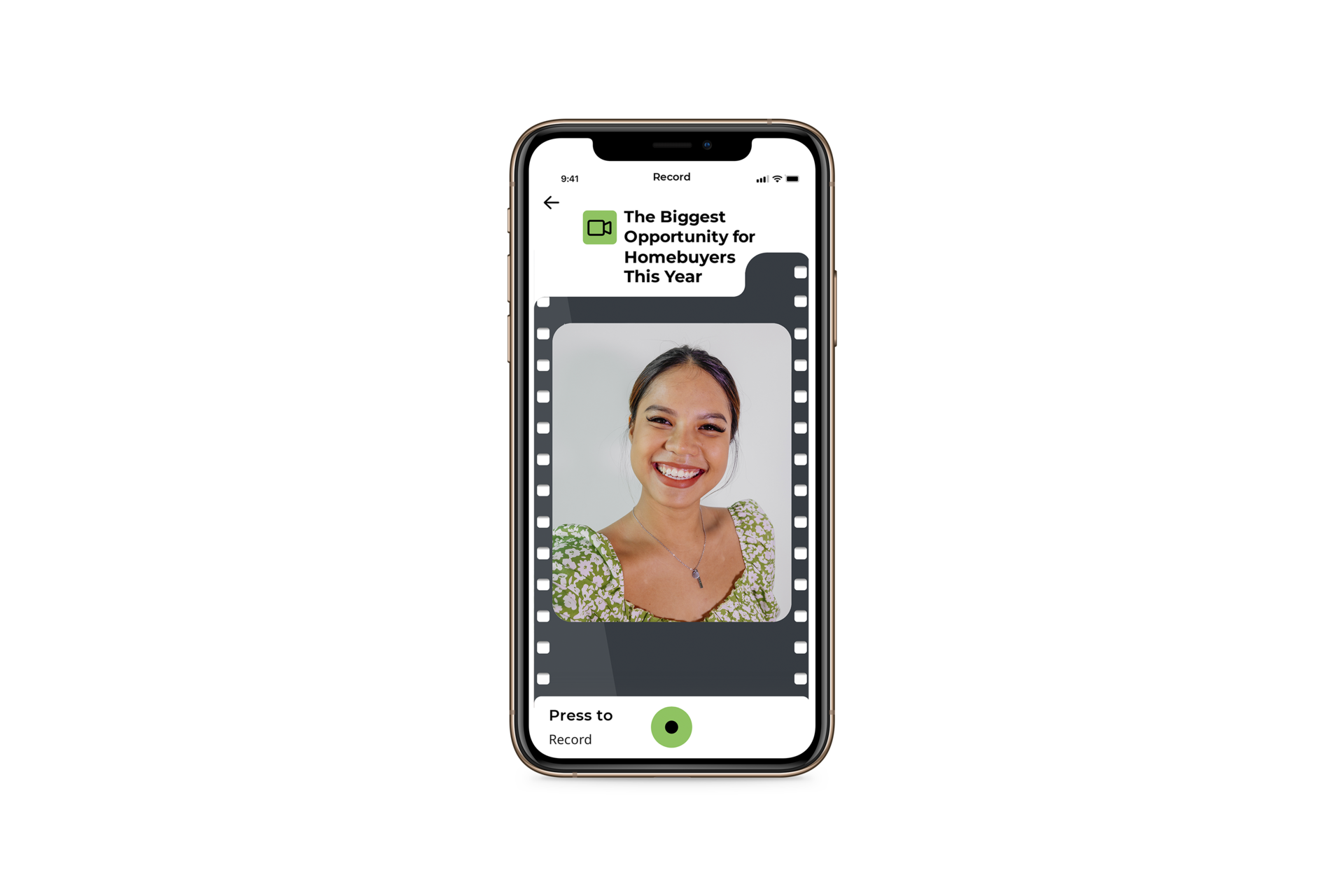How to Create a Real Estate Video in 5 Easy Steps
Ready or not, video is quickly taking over the world of real estate.
From listing tours to personalized emails, there’s no doubting just how important and effective it can be for communicating with your sphere.
In fact, new real estate video statistics show that viewers retain 95% of a message when they watch it in a video, compared to 10% when reading it in text.
For most agents, the hardest part of video is knowing where to start. Which is why we made it easy to create your own real estate videos in just 5 simple steps.
Lights. Camera. Action!
Real Estate Video 101
First things first, you need to find a KCM Real Estate blog post to turn into a video. Once you’ve found the one you like, read it a couple of times to get familiar with the content.
Ask yourself these questions:
- What’s the main theme?
- What are the key takeaways?
- How does it apply to my market?
Once you’ve got those down, you can start writing your script. Using bits of the blog, piece together what you want to say in the video, adding your own personality and local flair throughout.
Pro tip: Trying to overcome your fear of being on video? There are tons of teleprompter apps that let you easily film videos without having to memorize everything.
Step 1: Introduction
Introductions are important because they not only personalize your video, they also localize it.
This could be as easy as “I’m Sally Smith, your local real estate professional in Anywheresville, Arkansas, and today I want to talk about down payments.”
You can practice it out loud a couple of times to see how it feels but don’t overthink it! It’s just an introduction. Make it short, sweet, and to the point.
Step 2: Question & Answer
This is the best way to make sure the topic of your video is loud and clear.
For example, let’s take a look at the blog How Much Do You Need for a Down Payment?
To start, you can take the first sentence as your lead-in, “One of the biggest misconceptions for first-time homebuyers is how much you need for a down payment.”
Then add something like, “But do you know you might not need as much as you think?»
And the answer lies in the third sentence of the blog: “If you believe you have to put 20% down, you may have set your goal based on a common misconception.”
That’s it! Just a couple of sentences that clearly state what you’re covering in the video, and you’re good.
Step 3: Key Point & Takeaway #1
Going further into the blog, we read about how there’s a lot of misunderstanding about down payment needs, especially for first-time home buyers.
Adding data and market insights in your videos is a great way to establish your professionalism and earn the viewer’s trust.
So, you can use this information as your first Key Point: “According to Freddie Mac, the most damaging down payment myth-since it stops the homebuying process before it can start – is the belief that 20% is necessary.”
And then go into the takeaway: “Unless specified by your loan type or lender, it’s typically not required to put 20% down. According to the Profile of Home Buyers and Sellers from the National Association of Realtors (NAR), today the average down payment percentage is only 13%. And it’s even lower for first-time homebuyers, whose median down payment is only 7%.”
Step 4: Key Point & Takeaway #2
In the second key point, you want to make sure you’re bringing the whole story together. This is also a good time to add local flair. For instance, you can swap the “median price” amount for that in your area, being specific to call out certain neighborhoods.
See how we did it here: “That means if a qualified first-time buyer purchases a home in Anywheresville for the median price of $230,700, with a 7% down payment, that only amounts to a $16,149 down payment.”
And then you can elaborate on that in the second key takeaway, “There are also programs like FHA where the down payment can be as low as 3.5% of the purchase price for a first-time buyer, meaning you could pay as little as $8,074 for the same home noted above. Plus, there are also other programs like USDA and loans for Veterans that waive down payment requirements completely for those who qualify.”
Pro tip: visuals always make great additions to these videos. You can use real estate infographics, charts, and graphs to help drive your point home and show, rather than tell, your viewers the information.
Step 5: Conclusion & CTA
You’re almost there! Add in a sentence or two that wraps up the video, which you can usually find in the Bottom Line of your KCM Blog. And make sure you don’t forget a CTA!
For example, “Unfortunately, the lack of knowledge about the homebuying process is keeping many motivated first-time buyers on the sidelines. But don’t worry! Meeting with a local real estate professional like myself can help you better understand and plan for your down payment options today.”
Pro tip: Make sure to add your professional contact information like website or email address in the description of your video to make it easy for potential leads to reach out.
Bottom Line
Creating real estate videos may be intimidating, but it isn’t hard.
With a little practice and the help of the KCM blog, you could be a real estate video-making machine in no time.
And if you really want to take your video marketing to the next level, check out RealTalk by KCM, the new all-in-one video creator for real estate agents.
With a new market update script each week, built-in teleprompter and no editing required, being the local market expert has never been easier.
Try a free trial of RealTalk by KCM for 14 days with KCM Premium.






